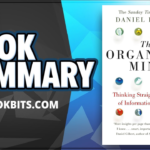FOLLOW US HERE > |YouTube | Podbean | Website
Discover the timeless spiritual principles in Seedtime and Harvest by Neville Goddard — one of his most profound teachings on imagination, faith, and the creative power within. This book summary explores how your thoughts are the seeds that shape your reality, and how conscious imagination leads to a fruitful “harvest” in life.
🌱 In this summary, you’ll learn: The law of cause and effect through imagination How belief determines what manifests in your world The secret to planting mental “seeds” for success and abundance How to align your inner world with your desired outer results If you’re interested in manifestation, spiritual growth, or Neville’s teachings, this summary will give you clear insights to apply in your daily life.
🎧 Watch till the end to understand how imagination truly creates reality!
💬 Don’t forget to like, comment, and subscribe for more Neville Goddard book summaries and spiritual teachings.
Seedtime and Harvest by Neville Goddard
- The Bible is written in the language of symbolism and is a revelation of the laws and functions of the mind.
- The purpose of the book is to show how to succeed in realizing one’s desires through the conscious, voluntary exercise of imagination in accordance with the laws of the mind.
- The “Four Mighty Ones” in a person are four different aspects of their mind that can be equated with the Tetragrammaton symbol of the creative power in man – “I AM.”
- The “Four Mighty Ones” can be compared to the four most important characters in the production of a play: the producer, the author, the director, and the actor.
- The producer suggests the theme of a play in the form of a wish, the author writes the script, the director rehearses and coordinates the actors, and the actor brings the script to life.
- To realize one’s desires, they must first be clearly defined, then the script must be written, and then the desire must be rehearsed and acted out with conviction.
- The secret to success is to be the actor and not the spectator, to believe in one’s script and act it out with enthusiasm and conviction.
- Cain and Abel are personifications of two distinct functions of consciousness: the limited perception of the senses and an imaginative view of the world.
- Cain represents a passive acceptance of life-based on appearances and leads to discontent or disillusionment, while Abel represents a vision of fulfilled desire that lifts a person above the evidence of the senses.
- The Lord, or consciousness, rejects Cain’s gift and delights in the gift of Abel, which is the active use of imagination on behalf of oneself and others.
- Faith is the belief in something that is not seen and sacrifices apparent facts for unapparent truths.
- Through the power of imagination and the persistence of an assumption, even if denied by the evidence of the senses, it can harden into fact.
- The story of the woman who imagined her nephew’s birthmark away illustrates the power of imagination and the importance of persistently holding an assumption.
- The power of imagination and the persistence of an assumption can be applied to any desire or goal.
- In a dream, Jacob had a revelation of the ascending and descending levels of consciousness, or a scale of values, which gives meaning to everything in the outer world.
- The meaning of an object or event is a direct index to an individual’s level of consciousness.
- The objects and events in the world occupy a lower level of significance than the level of meaning that produced them.
- Most people try to explain higher levels of significance in terms of lower levels of what and how things happen.
- There are three levels of awareness for an accident: the event itself, how it happened, and why it happened.
- On the ascending scale, each higher level brings us closer to the truth about an event.
- The Lord or meaning is the creator and cause of the phenomena of life.
- The individual’s level of consciousness determines their perception of the world.
- By understanding the ascending and descending levels of consciousness, an individual can bring about change in their life.
- Life is a game played on the playing field of the mind.
- The aim of the game of life is to increase awareness and achieve our goals and desires.
- The rules of the game of life are simple but take a lifetime of practice to use wisely.
- One of the rules is that what we think in our hearts influences our reality.
- Inner conversations shape our outer circumstances and we must be aware of our mental activity to play the game of life successfully.
- The power of the word cannot be broken and inner conversations based on already having something can lead to its manifestation.
- The fault for not achieving our goals lies within ourselves, not in external circumstances or other people.
- We can achieve our goals by using the power of the word and focusing on the goal, not the competition or obstacles.
- The serpent is a symbol of the power of endless growth and self-reproduction, and man should learn to shed his old self and grow a new environment.
- Man’s outer world and conditions are the out-picturing of his inner state of consciousness.
- The serpent was also associated with the guardianship of treasure or wealth, and man should awaken the power of his imagination to grow and outgrow and find his treasures.
- The spiritual body of imagination is not interlocked with the physical body and environment and can withdraw to imagine a desired state in hope that it will solidify as a new environment.
- To prepare for a new environment, a person must construct a life-like representation of it in their imagination and visit it repeatedly until it feels natural, then return to the physical world.
- The new environment will then manifest in the physical world as the person’s new circumstances.
- The symbols of water and blood in the gospel and Epistle of John represent psychological truth and living a life according to that truth, respectively.
- Literal-minded individuals who do not discover the hidden meaning behind symbols of truth remain on a lower level of understanding and do not experience true transformation.
- The “cup of water” (psychological truth) must be turned into “wine” (active application of truth) in order to truly taste and experience it.
- Salvation and transformation come from actively using imagination to appropriate a specific state of consciousness.
- This state of consciousness is a man’s demand on the infinite storehouse of God and will manifest in his life as his new environment.
- The Bible is a collection of parables that reveal the laws and purposes of the mind of man.
- The parables should be interpreted mystically to reveal deeper meanings.
- The advice to the disciples to not provide shoes for their journey symbolizes the importance of not relying on intermediaries between oneself and God and taking personal responsibility for one’s actions.
- Imagining evil is not enough, one must actively and lovingly use their imagination to visualize well in order to clothe and feed Christ (awakened Human Imagination).
- The chariot in the Song of Solomon symbolizes the mind, with the pillars of silver representing knowledge, the bottom of gold symbolizing wisdom, and the purple covering representing the incorporation of love and truth.
- The story of Joseph’s chariot also symbolizes the mind, with the tributaries following him representing the thoughts and actions that follow a person.
- Purple is a symbol of love and truth and is used to clothe the incorruptible four-fold wisdom of the mind.
- The “wood of Lebanon” symbolizes incorruptibility and is used to make the chariot, representing the importance of building a mind that is not susceptible to corruption.
- The “wedding garment” in the parable of the wedding feast represents the individual’s purified and illuminated mind, which is necessary for entry into the kingdom of heaven.
- The parable of the sower and the seeds represents the planting and growth of thoughts in the mind, with the different types of soil representing the receptivity of the mind to these thoughts.
- The parable of the tares among the wheat symbolizes the coexistence of good and evil thoughts in the mind, with the separation of the tares and wheat representing the eventual victory of good over evil in the mind.
- The mustard seed in the parable represents the power of imagination to grow and transform.













